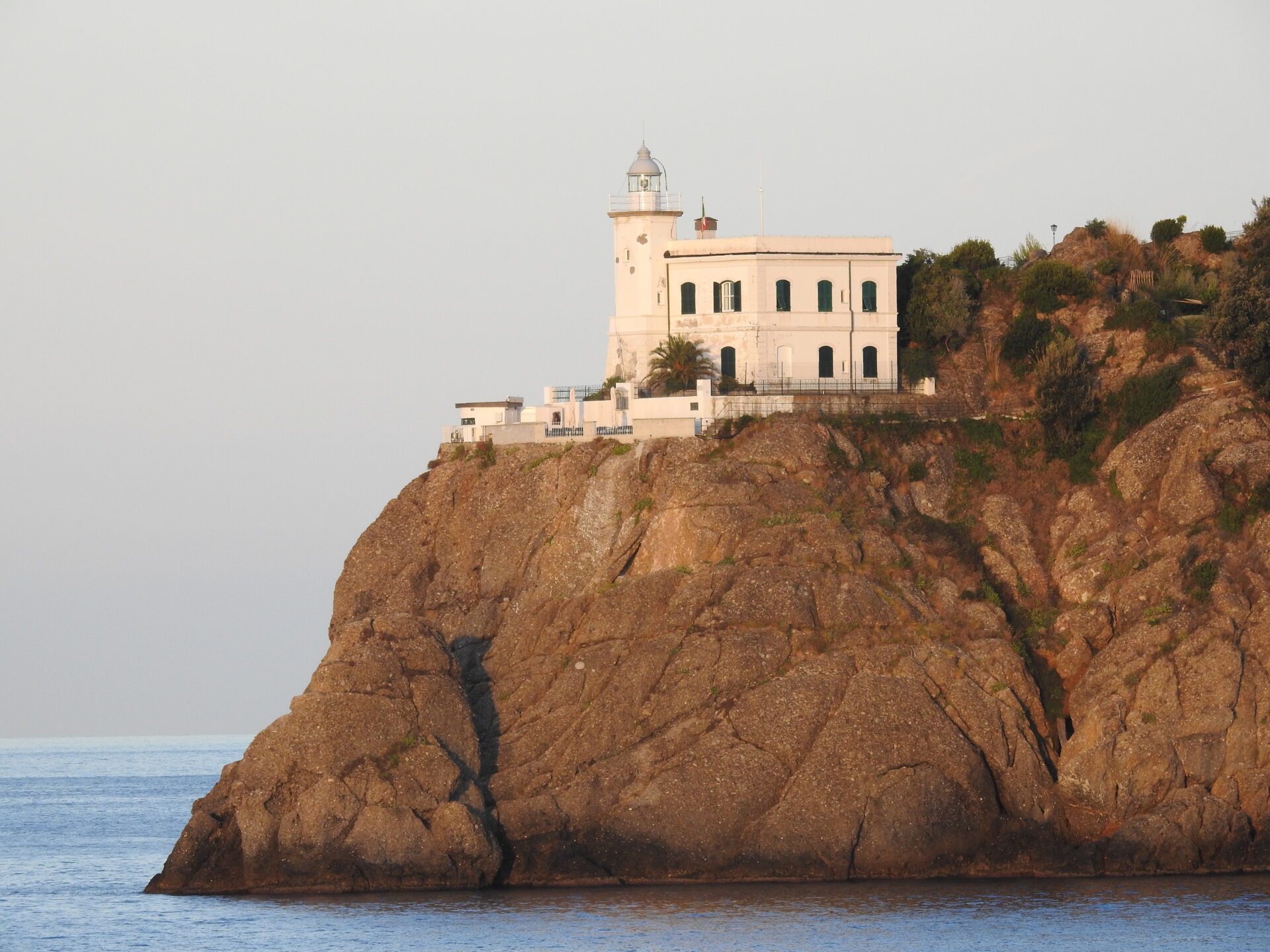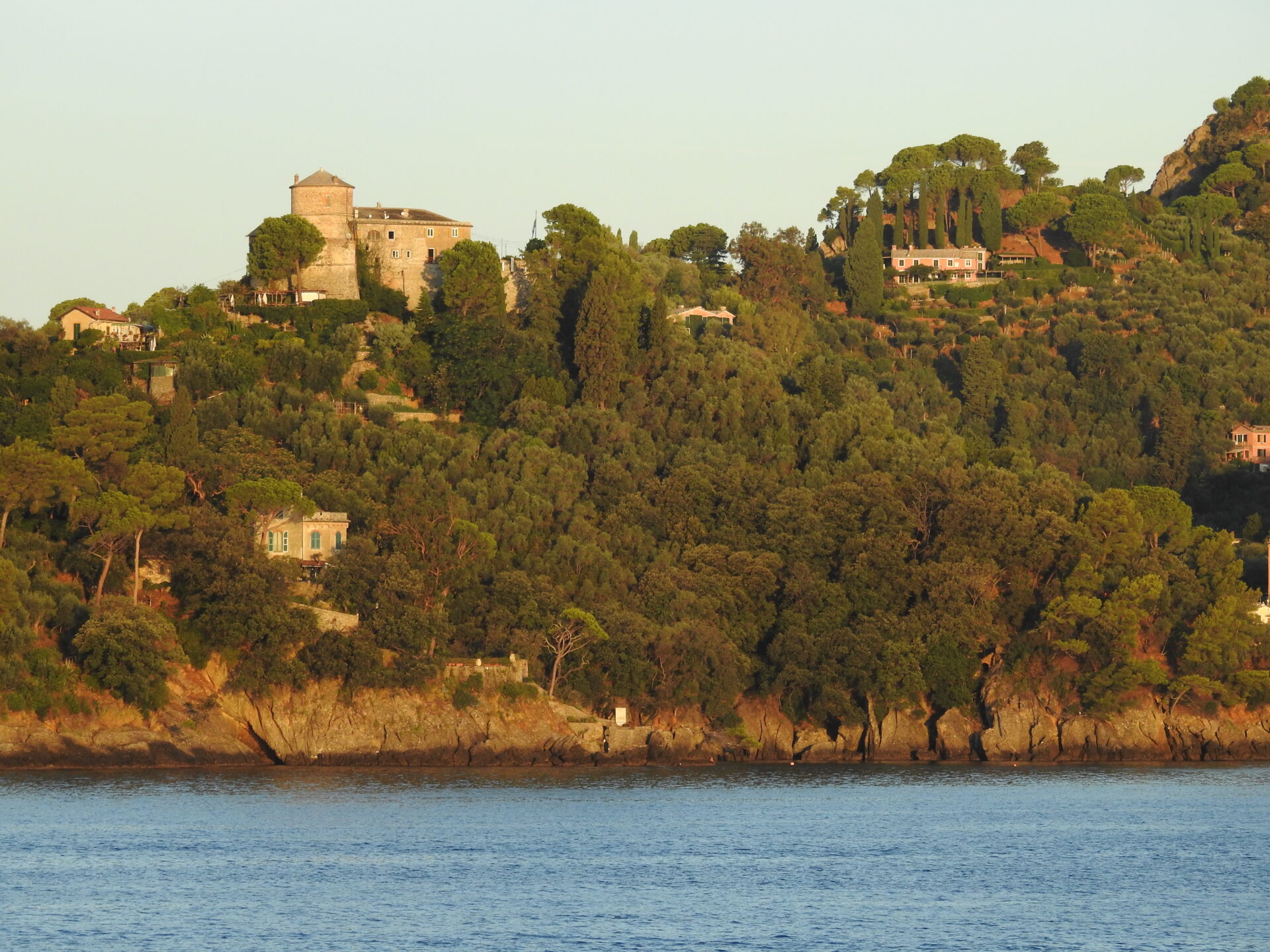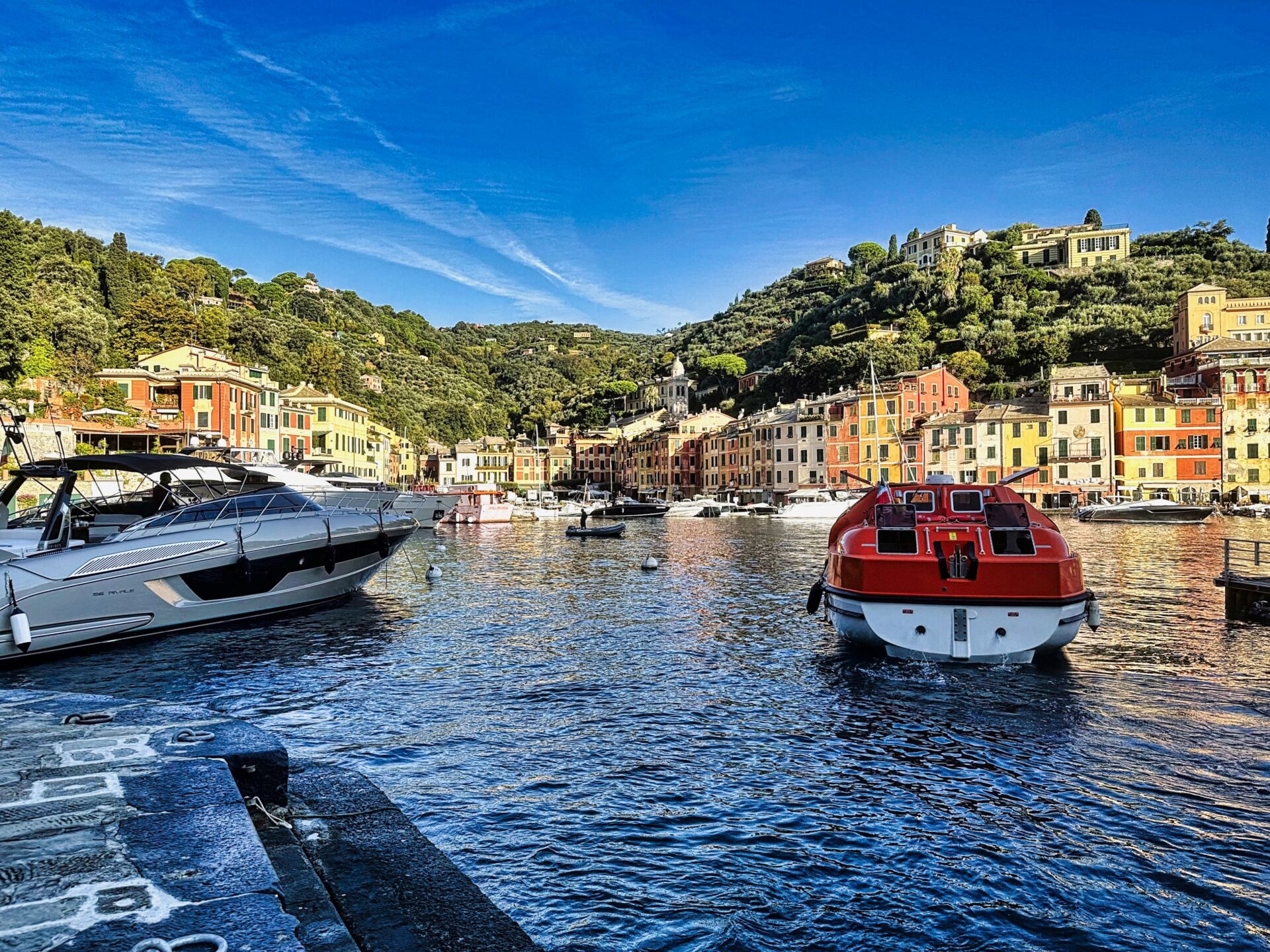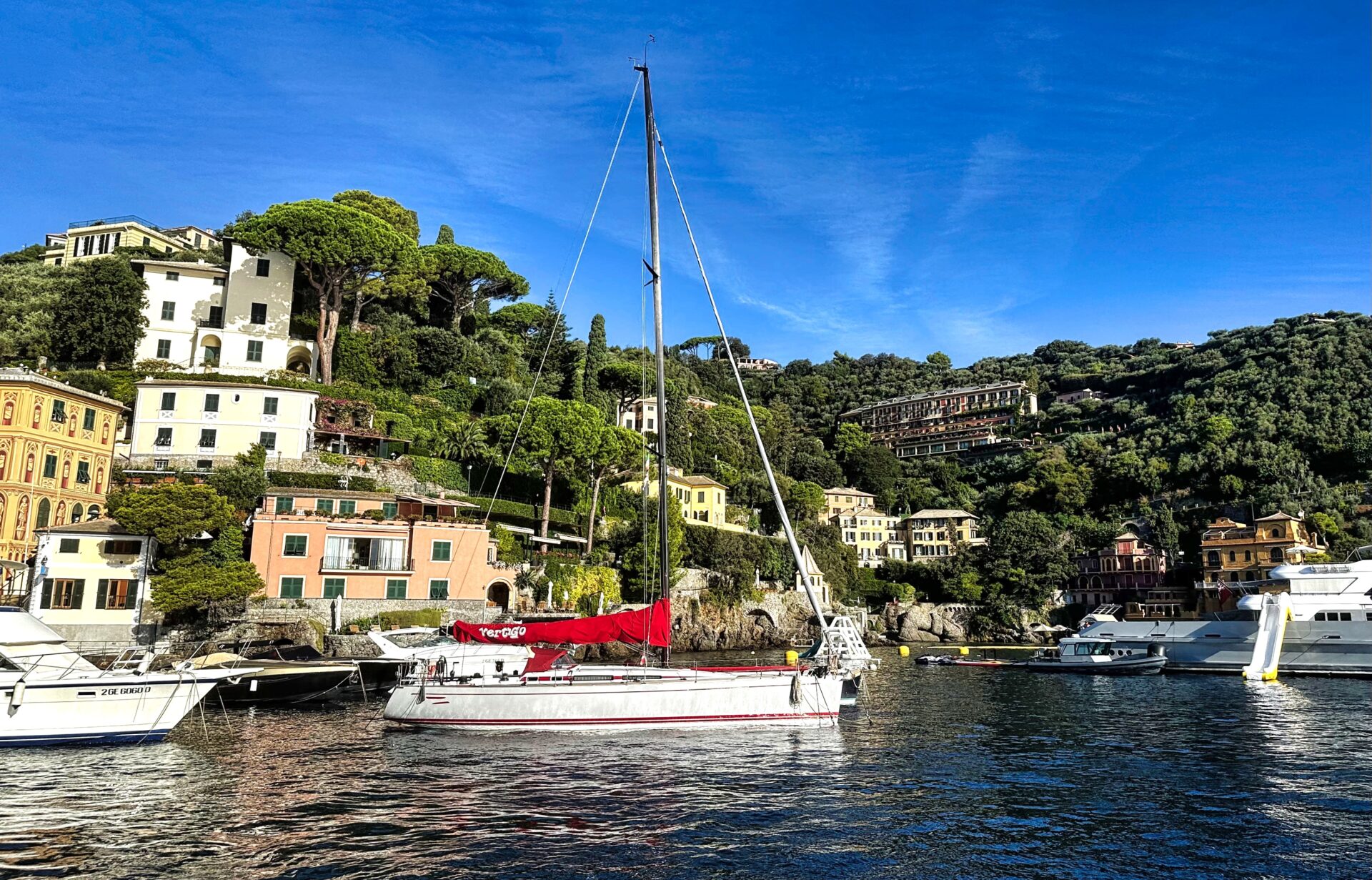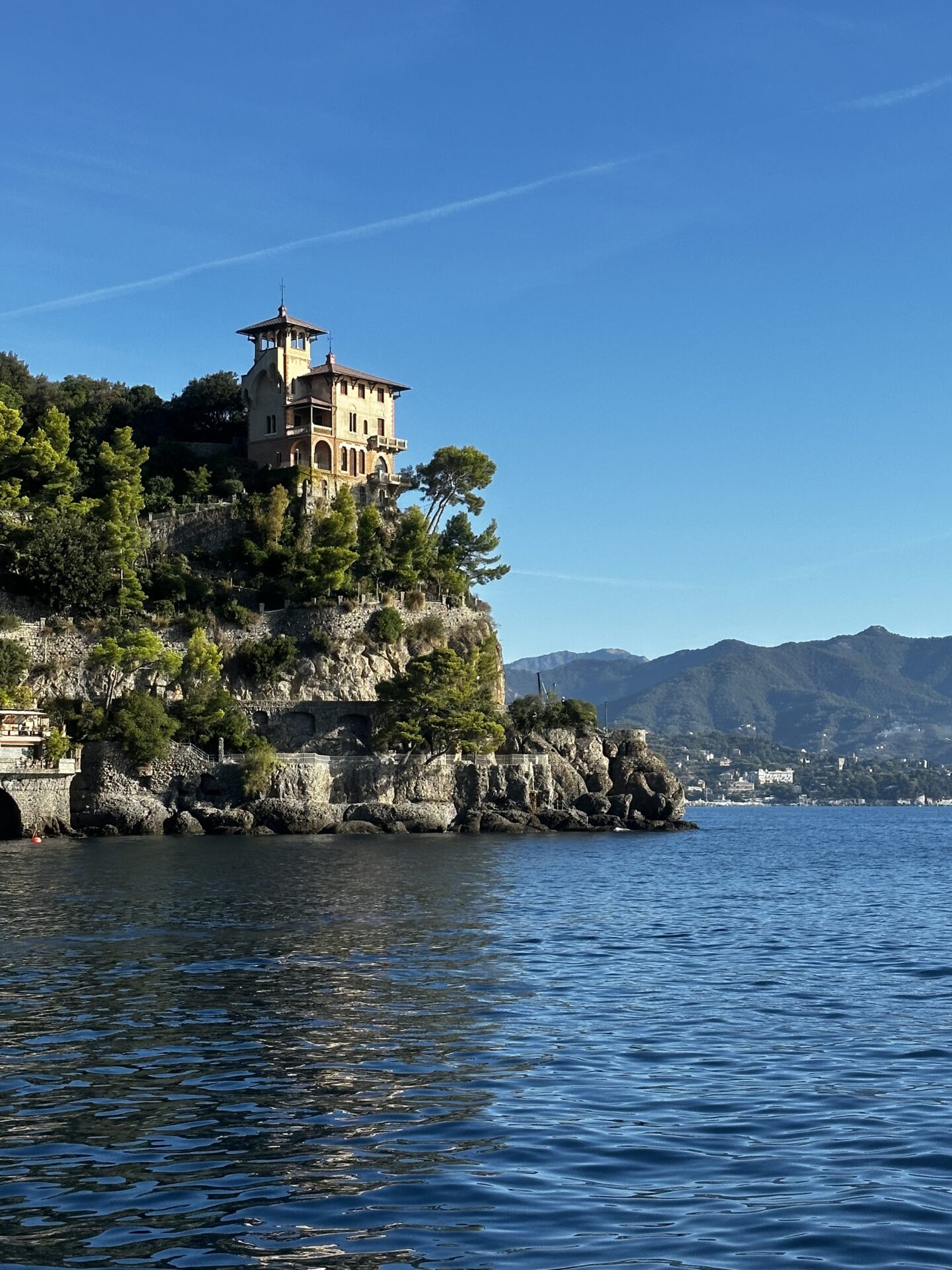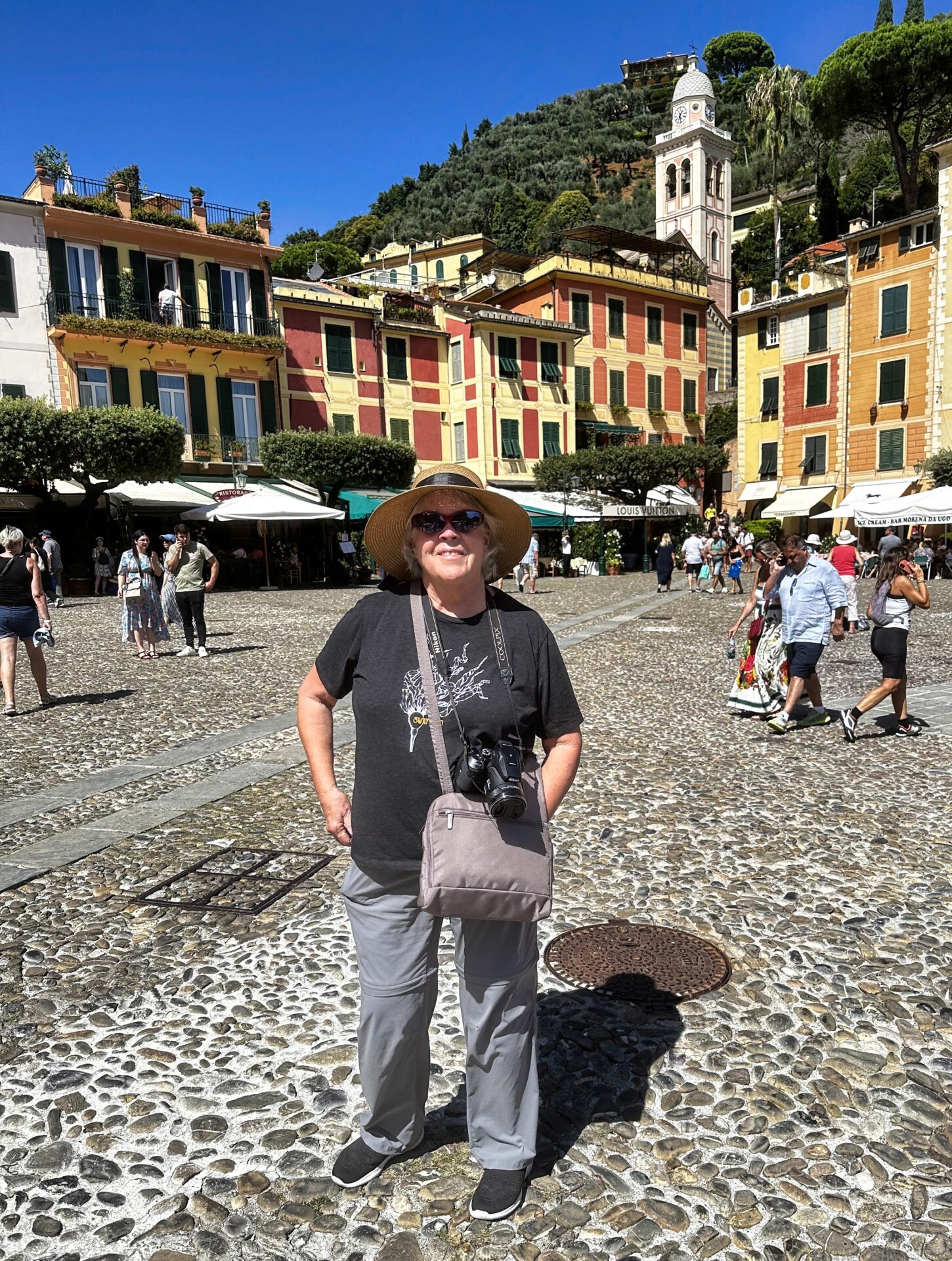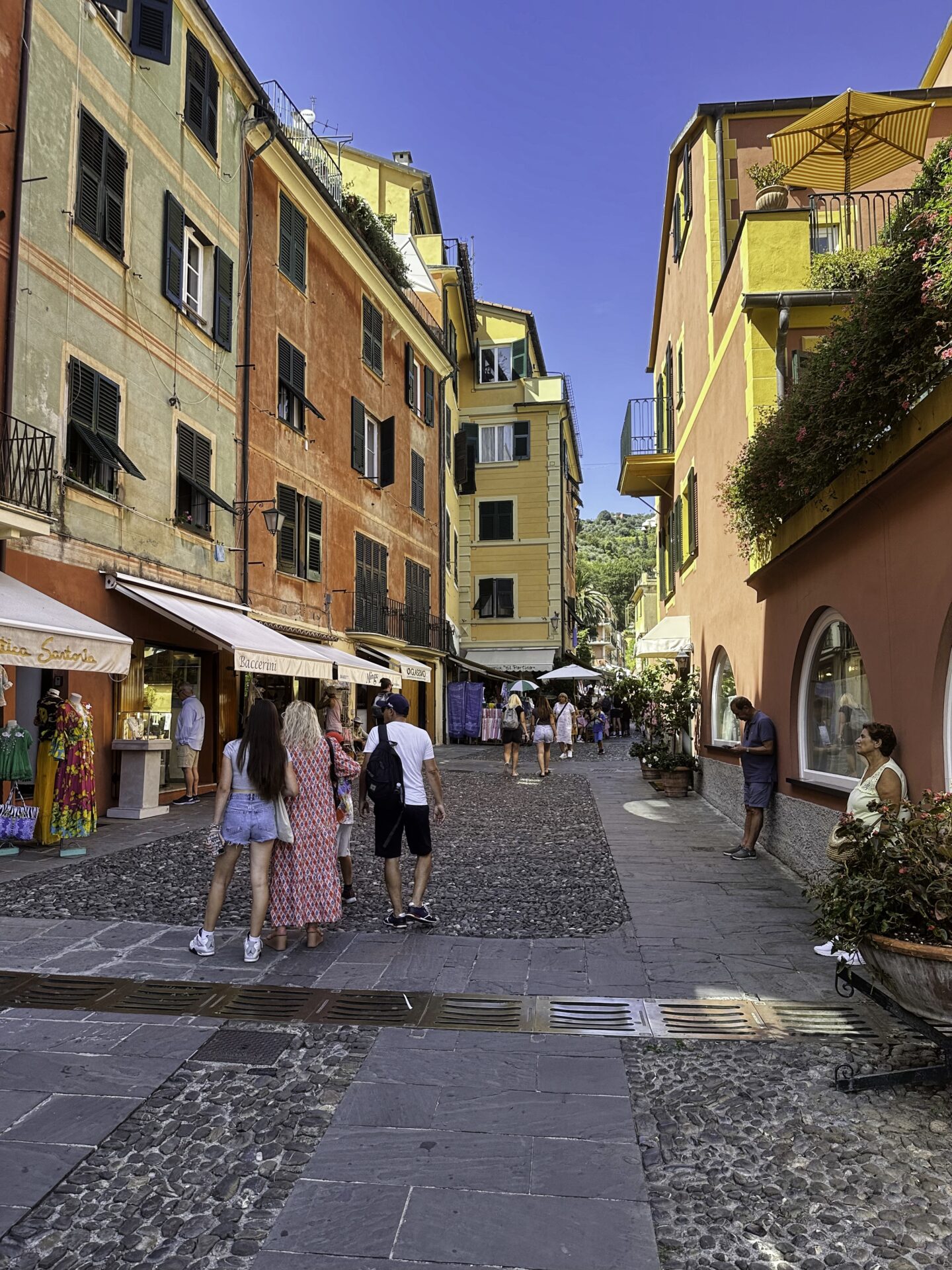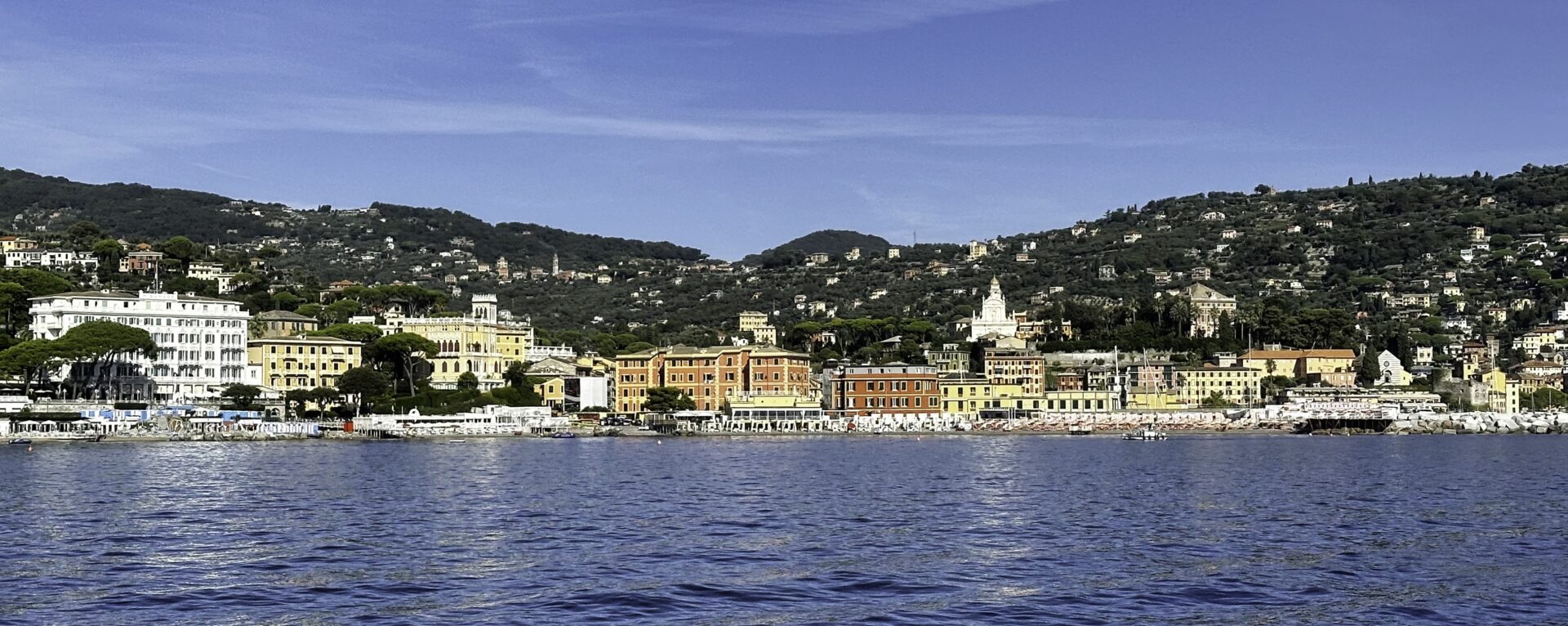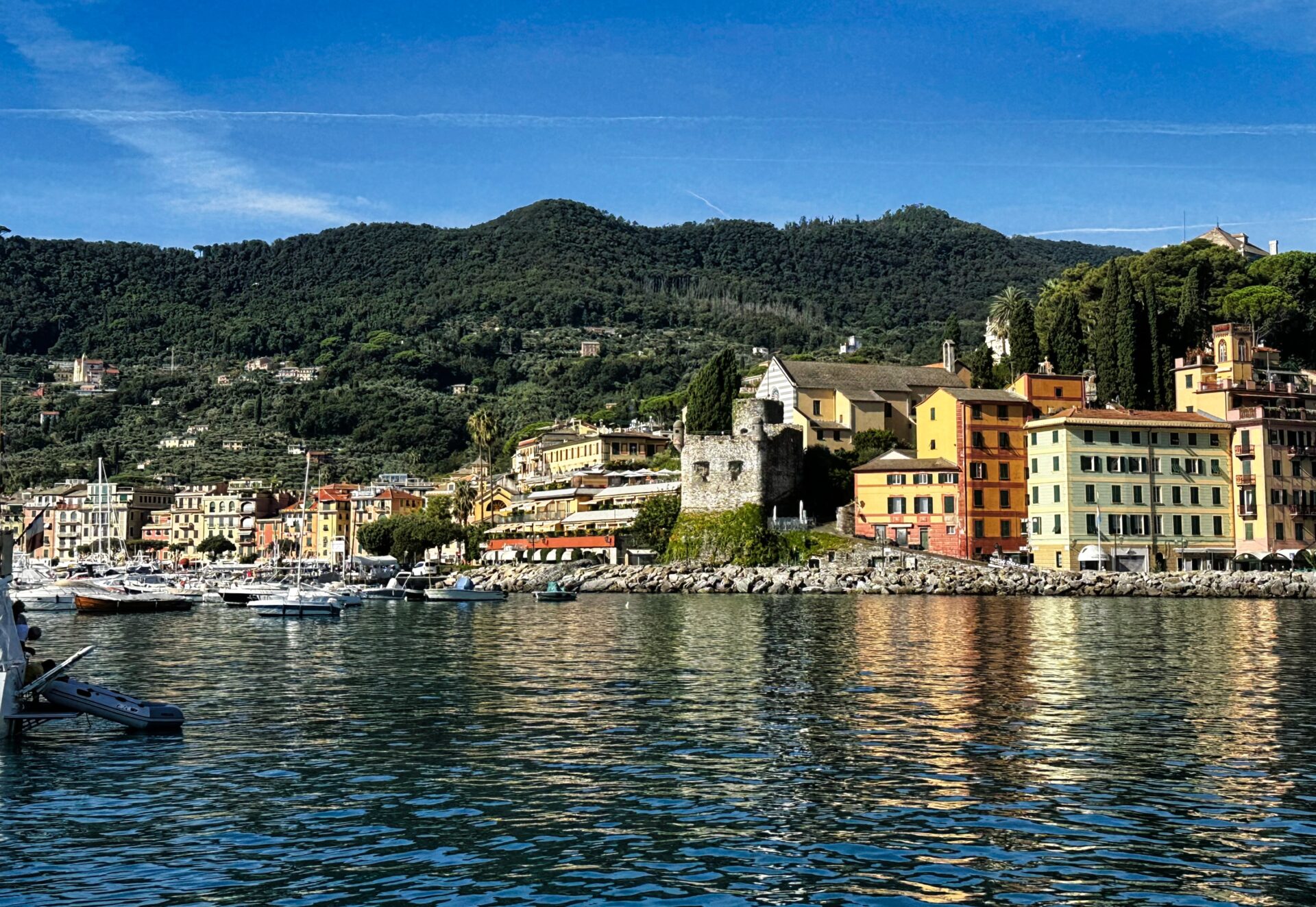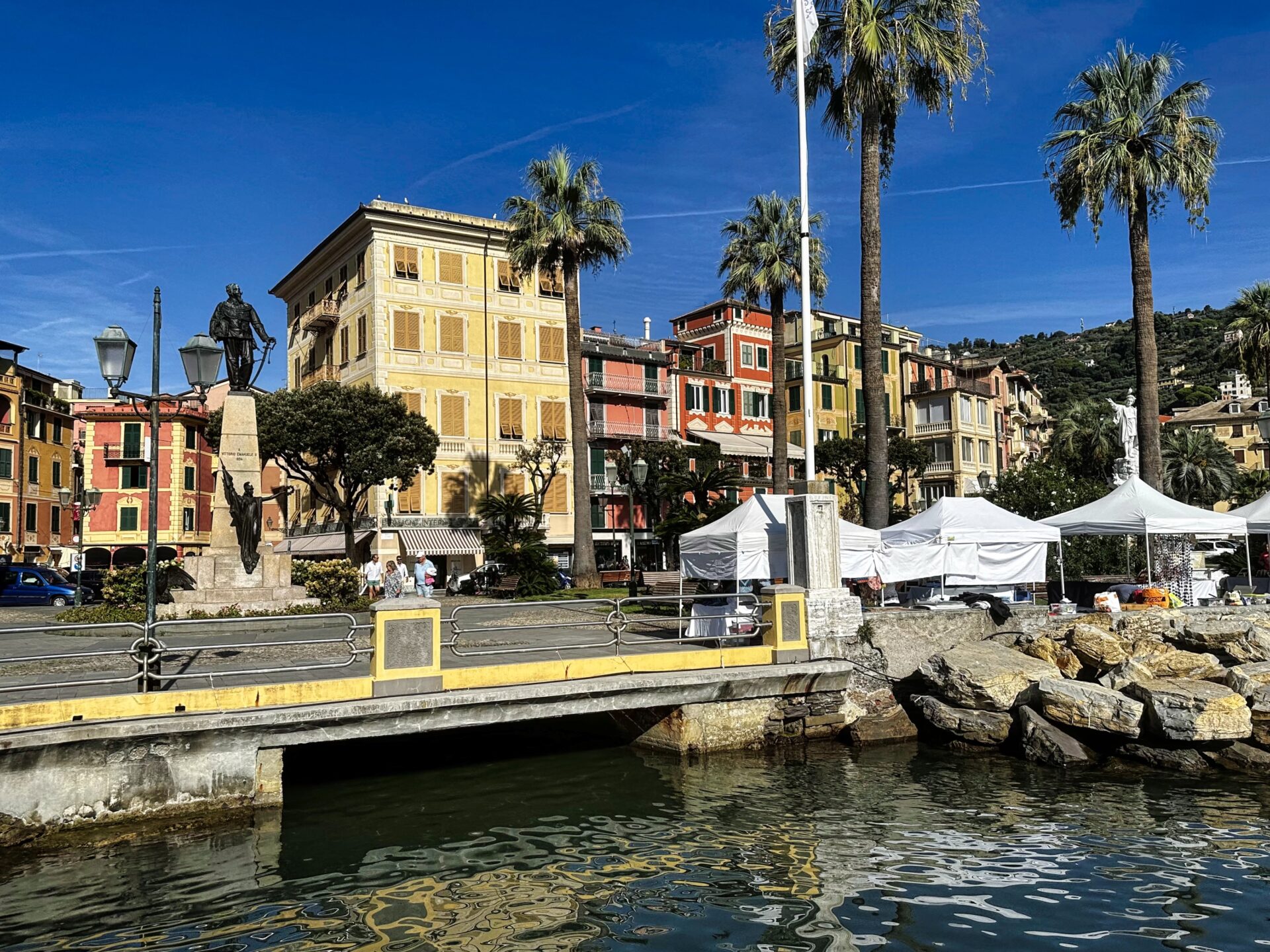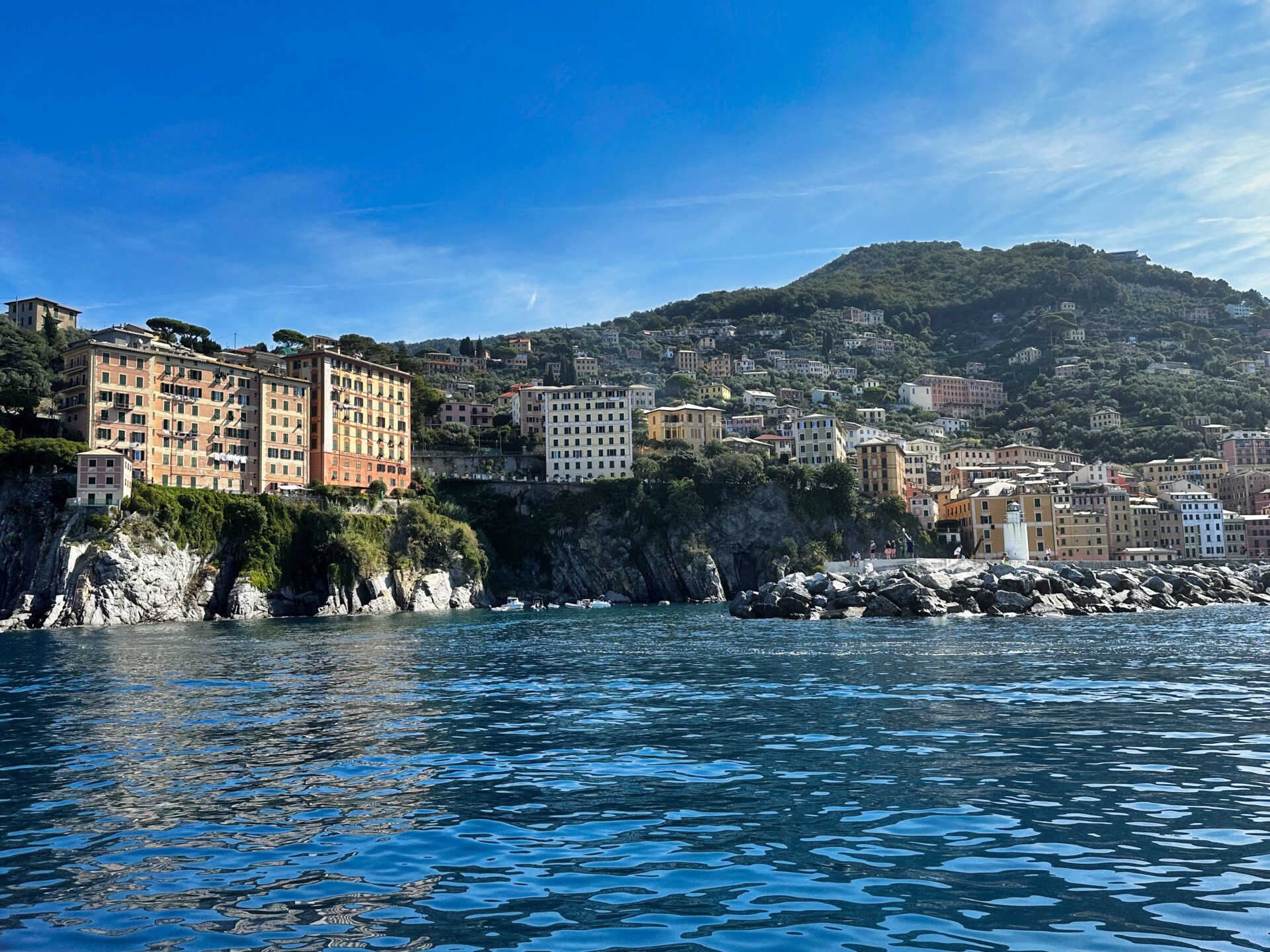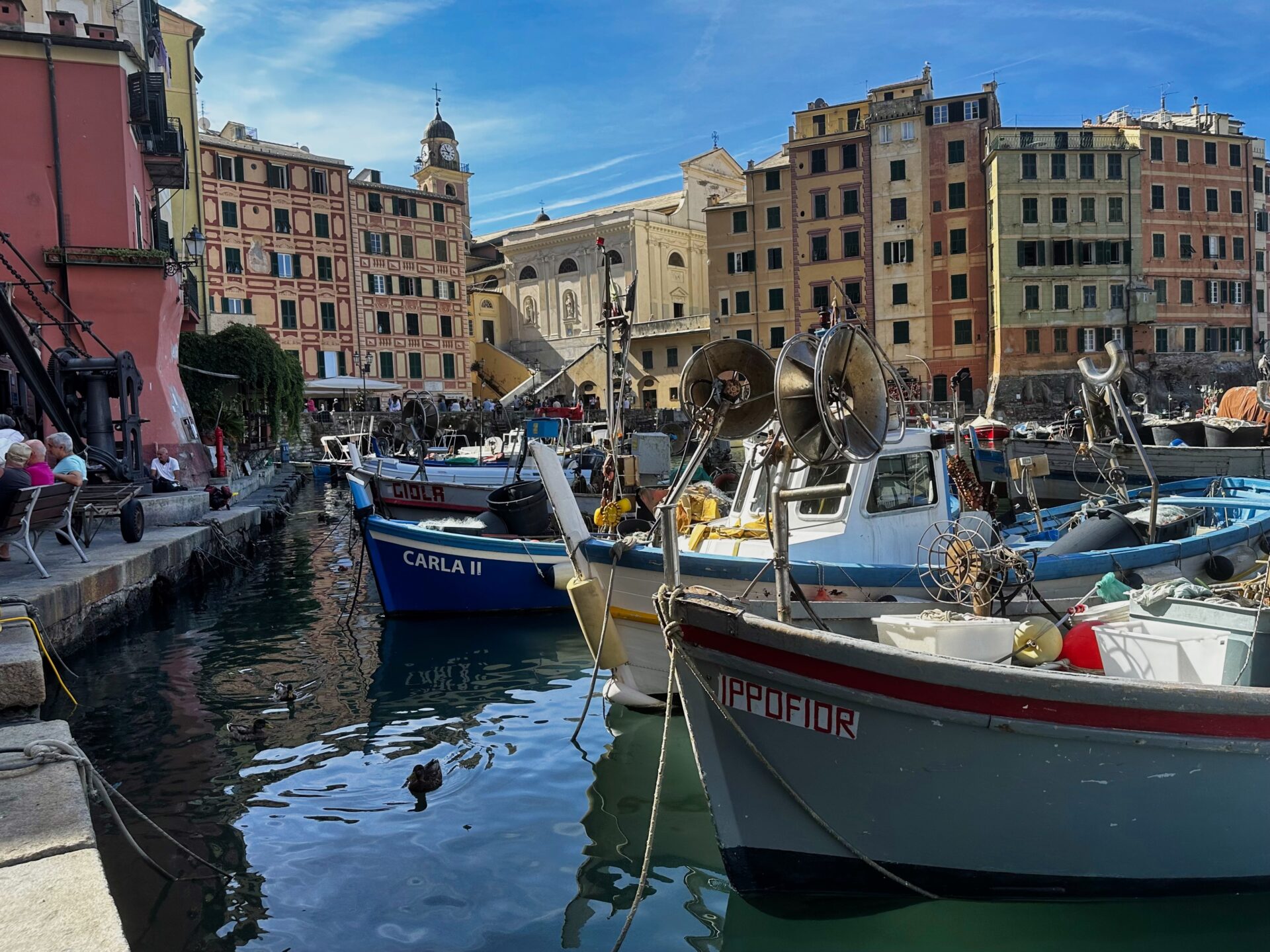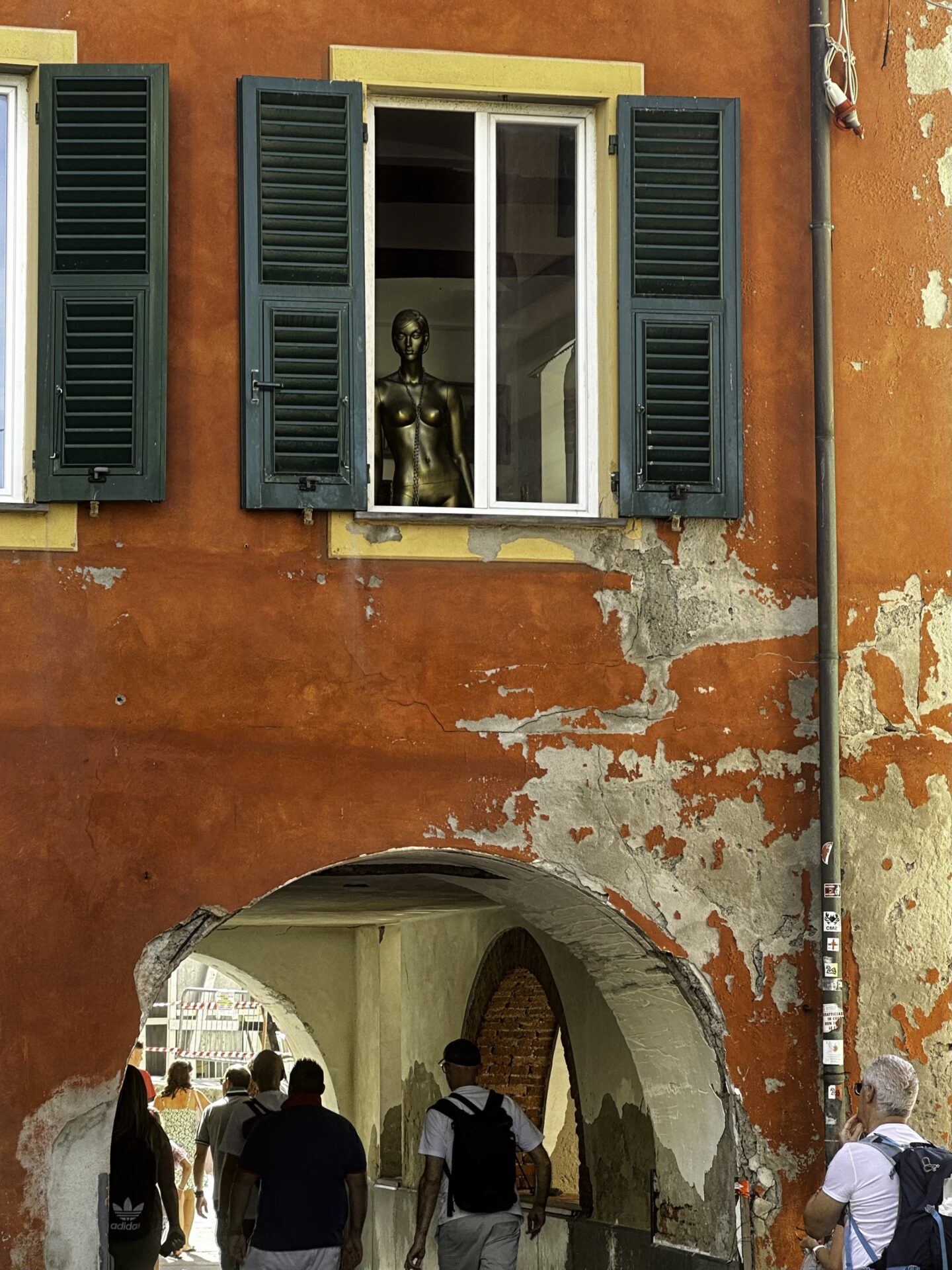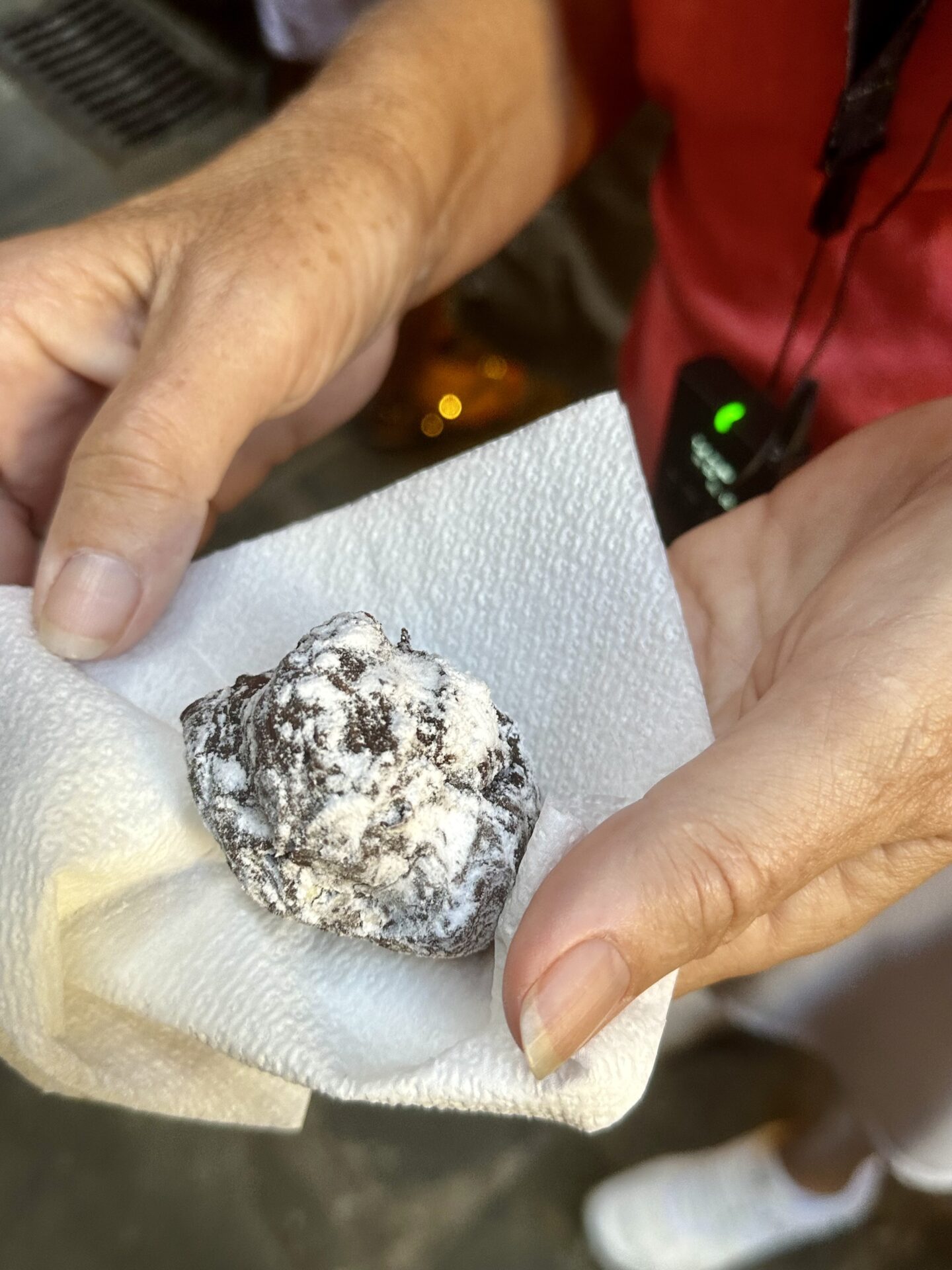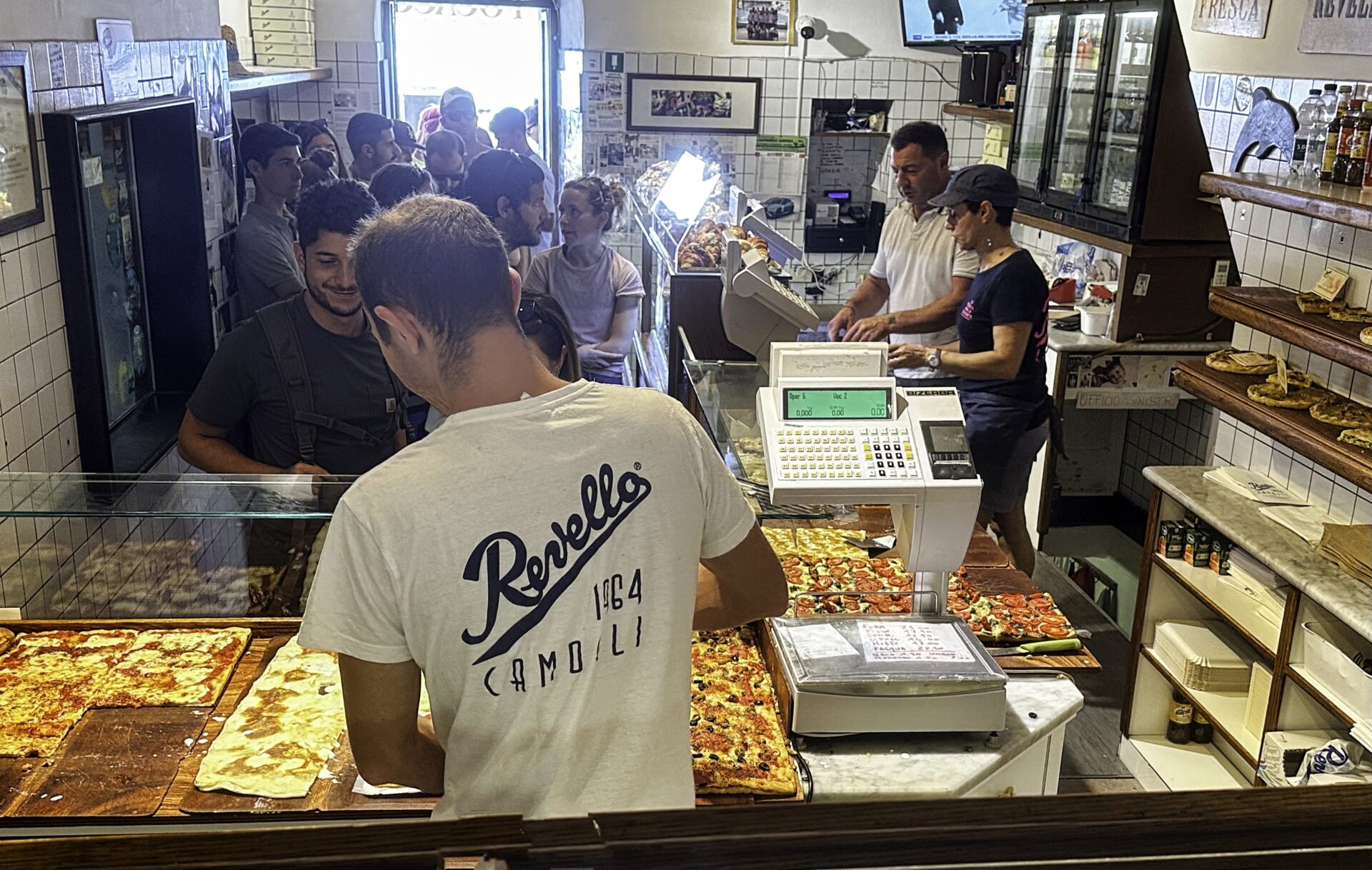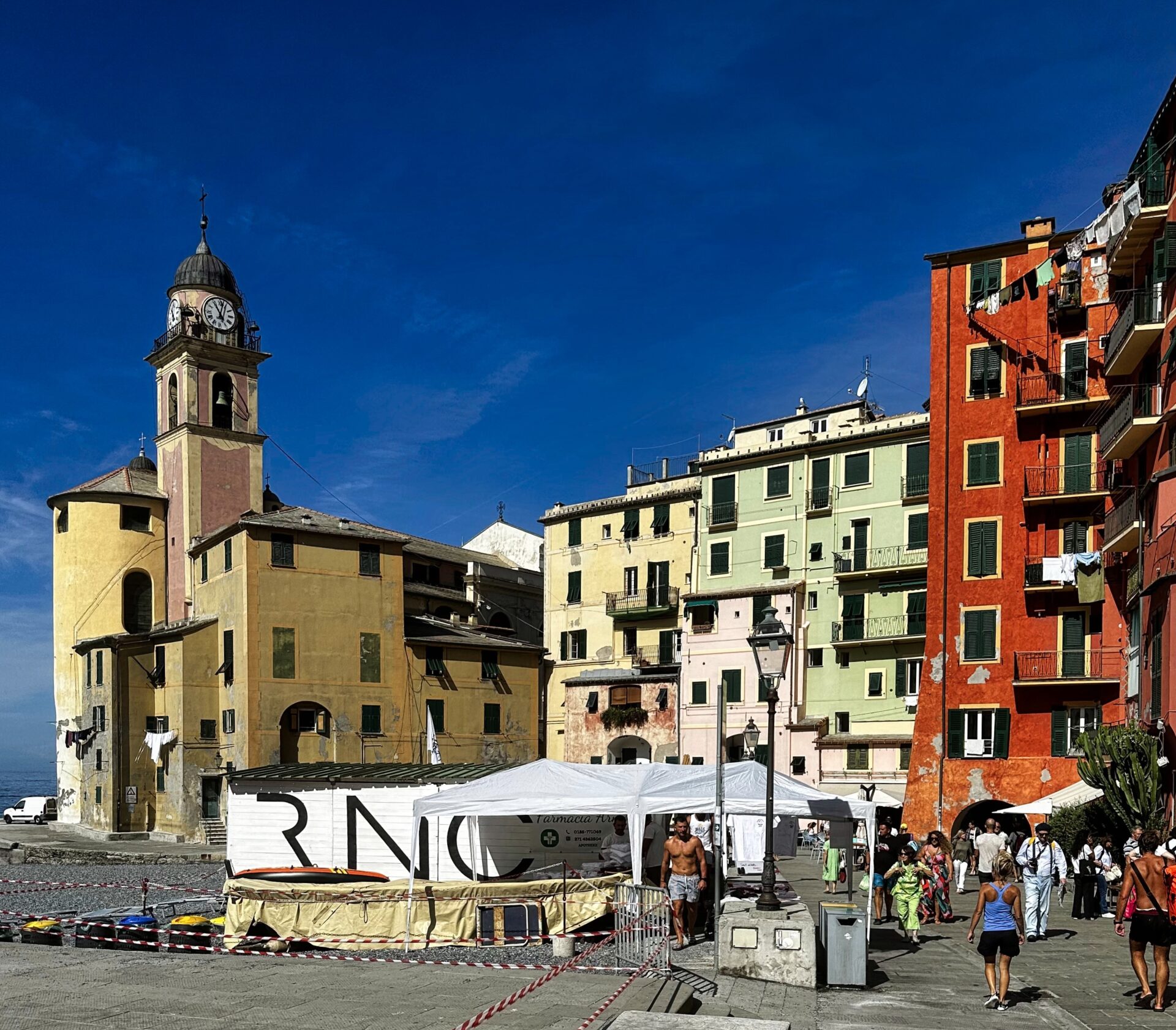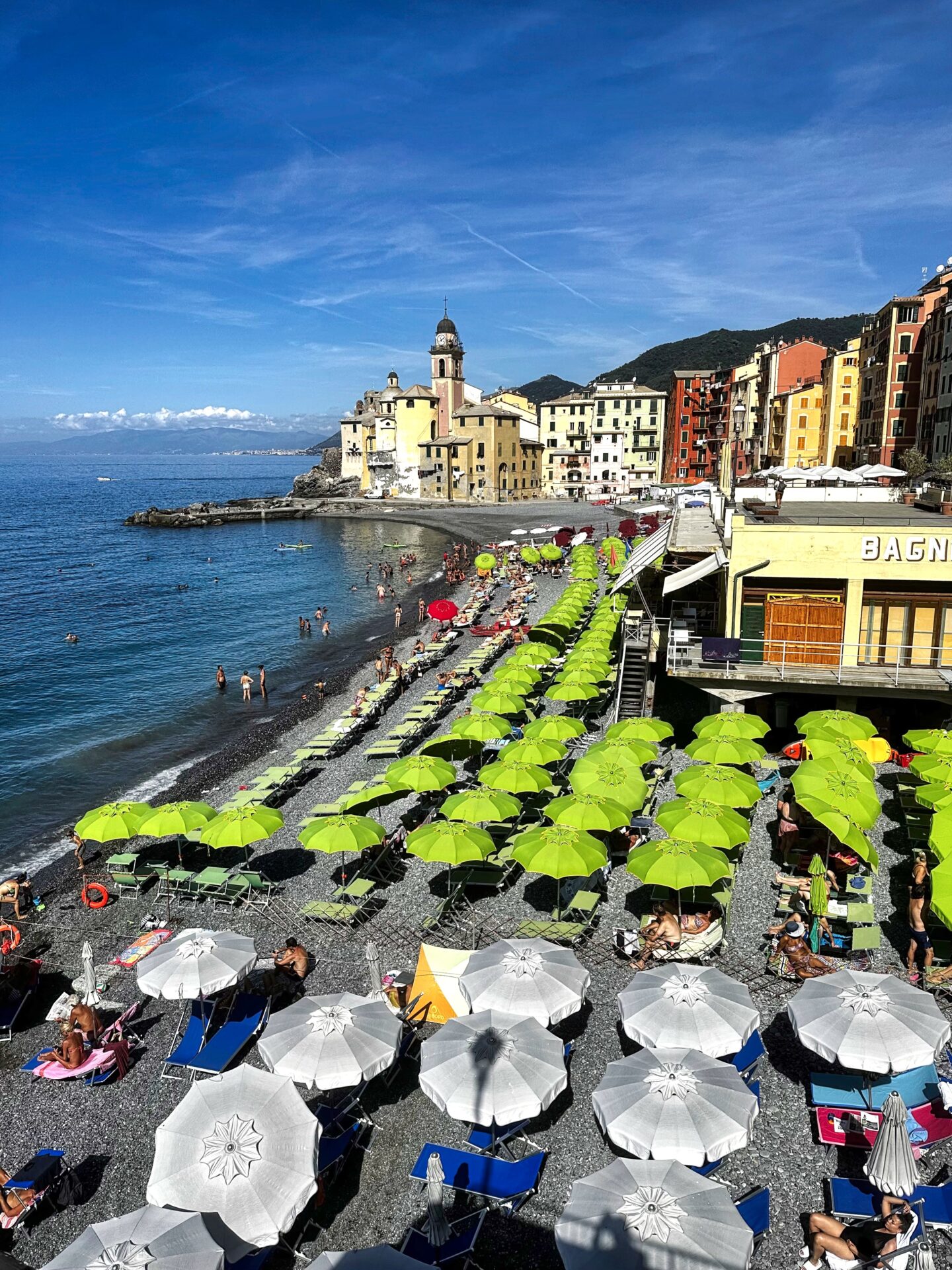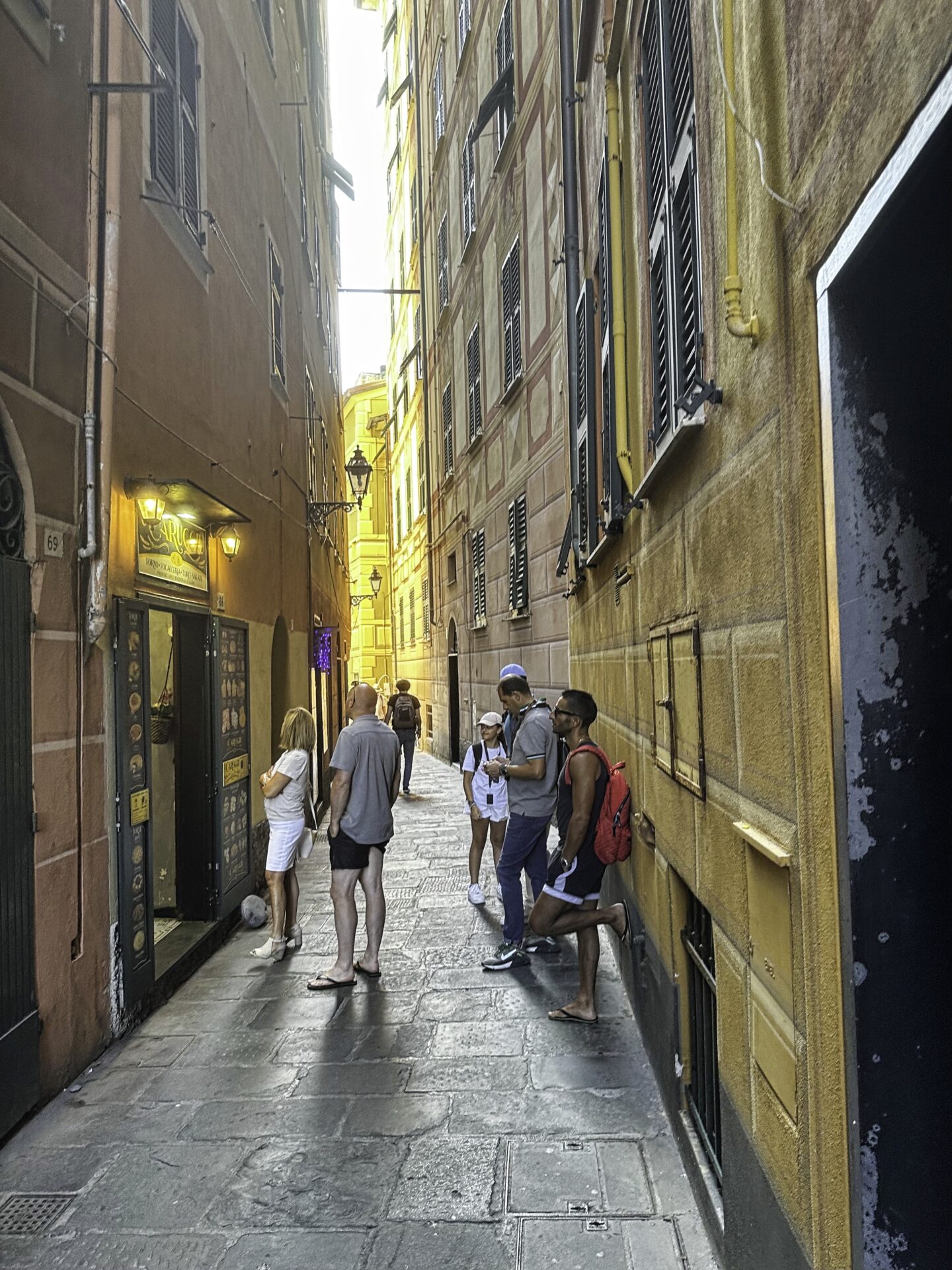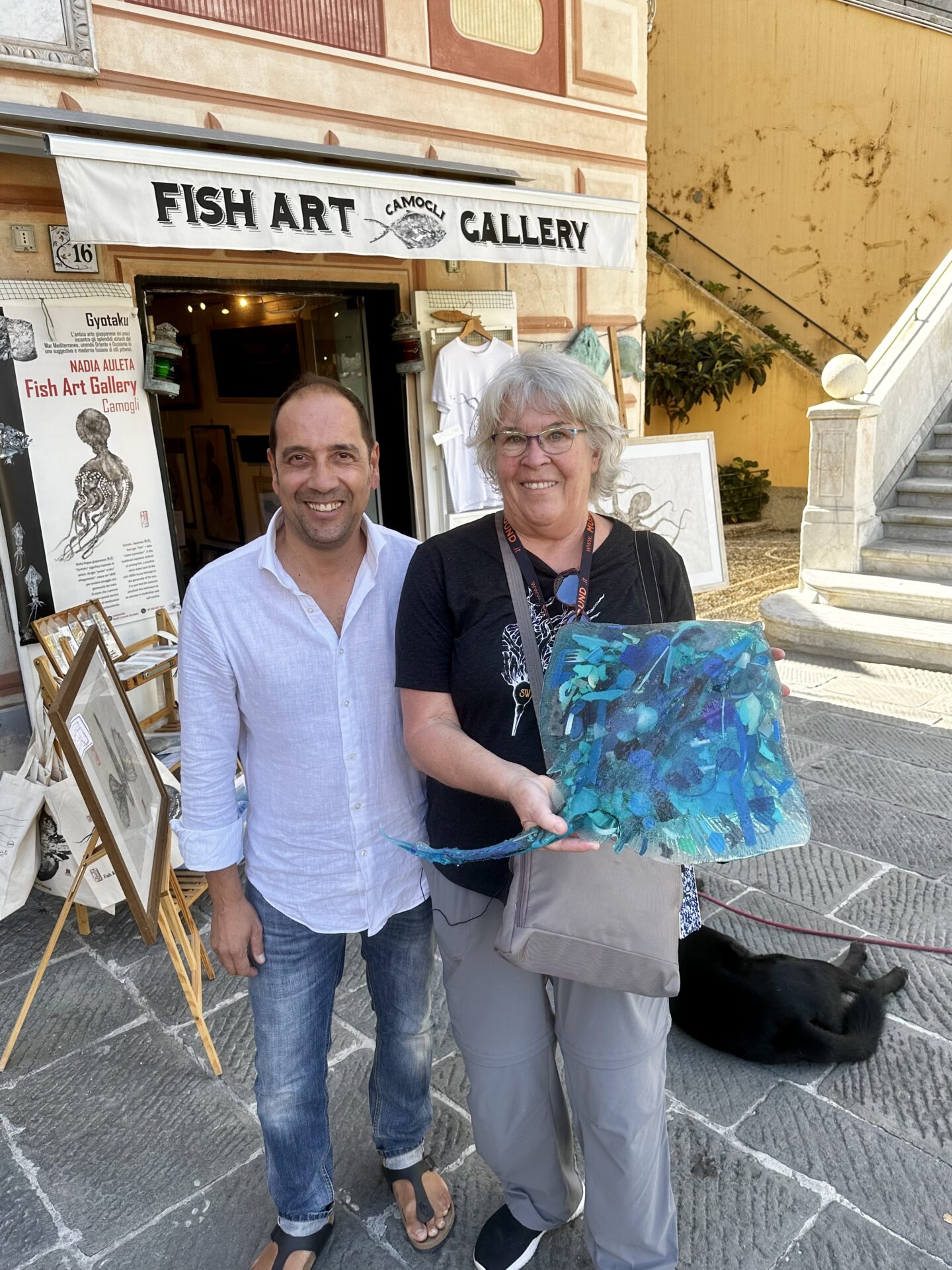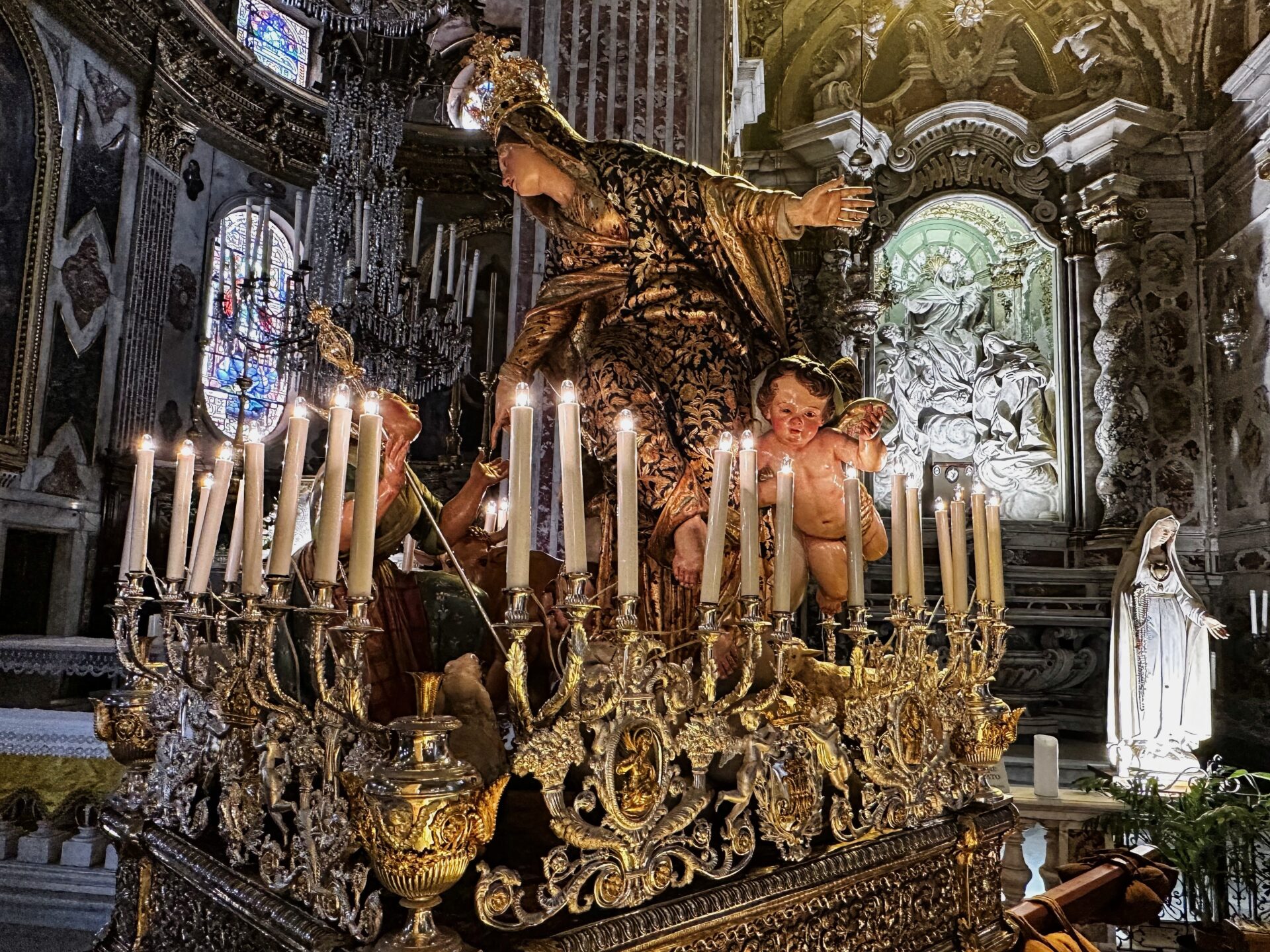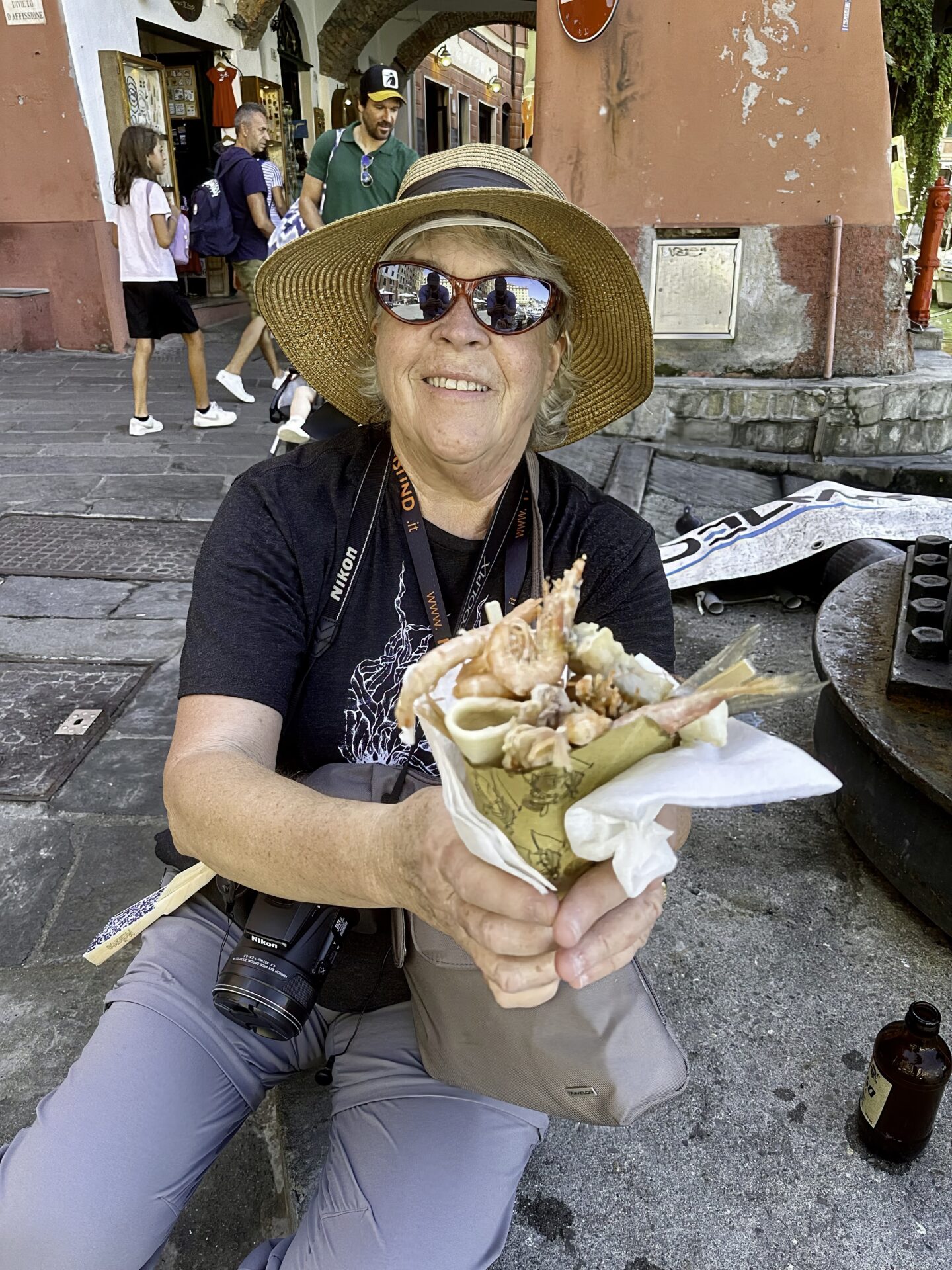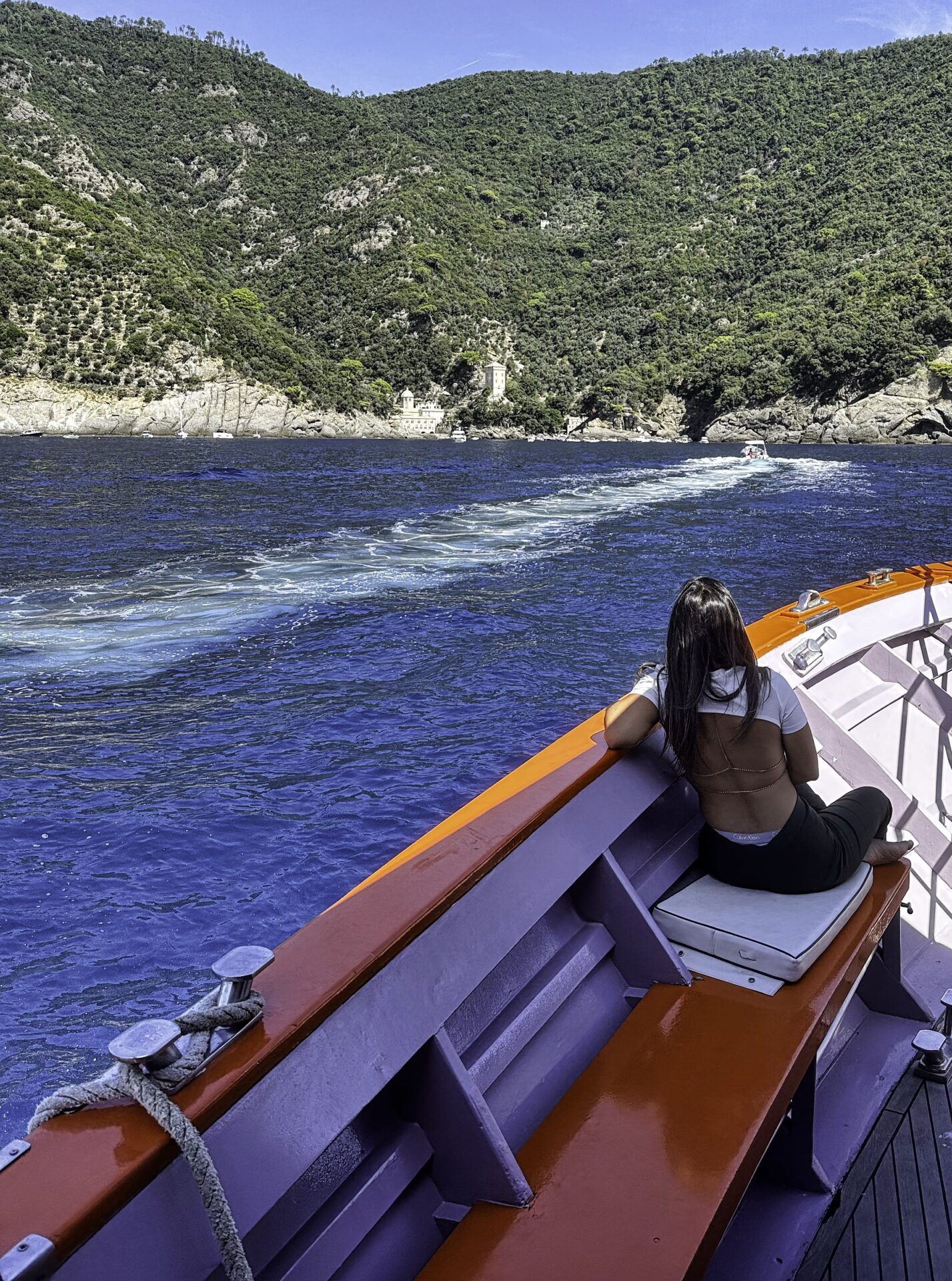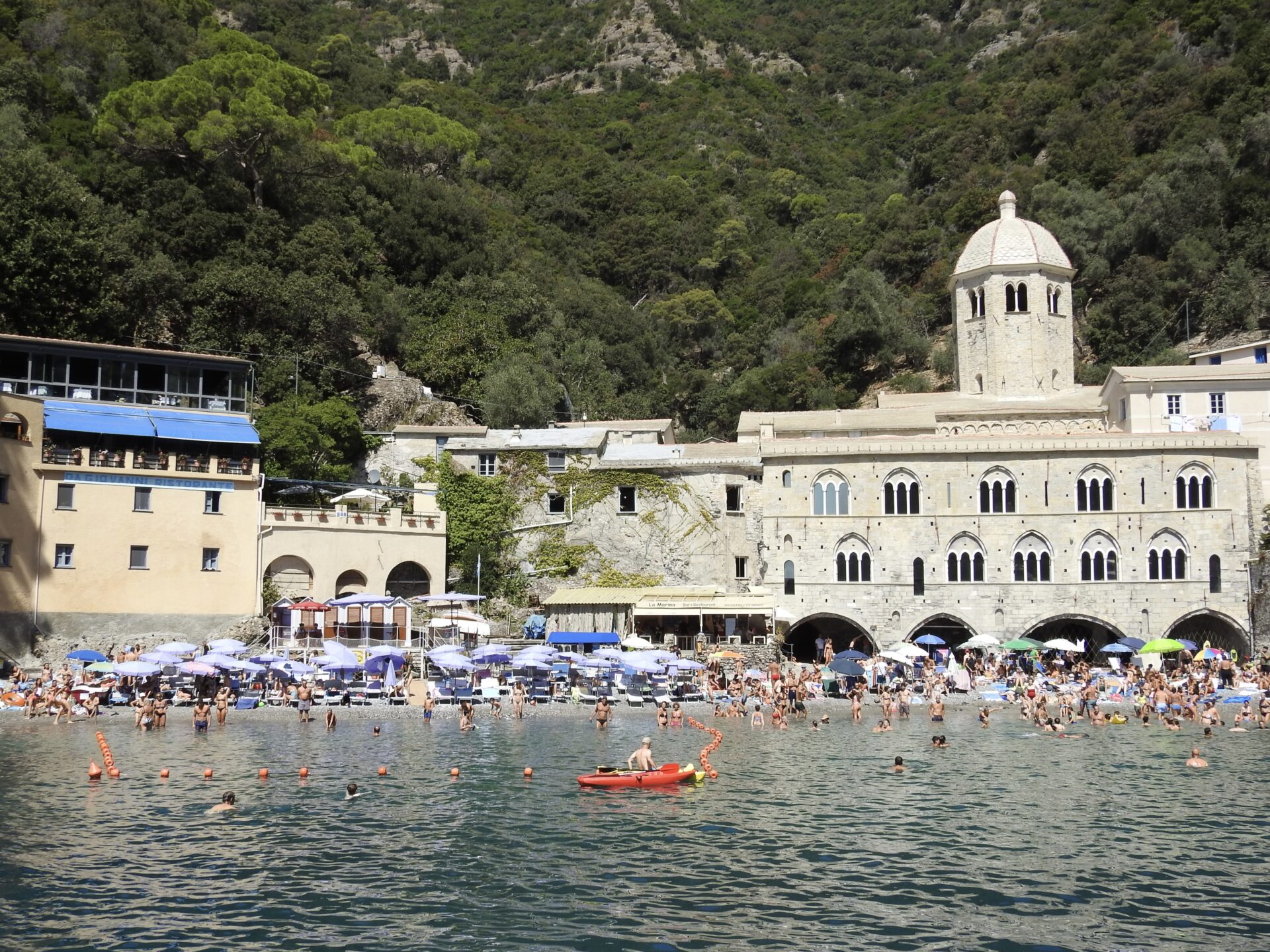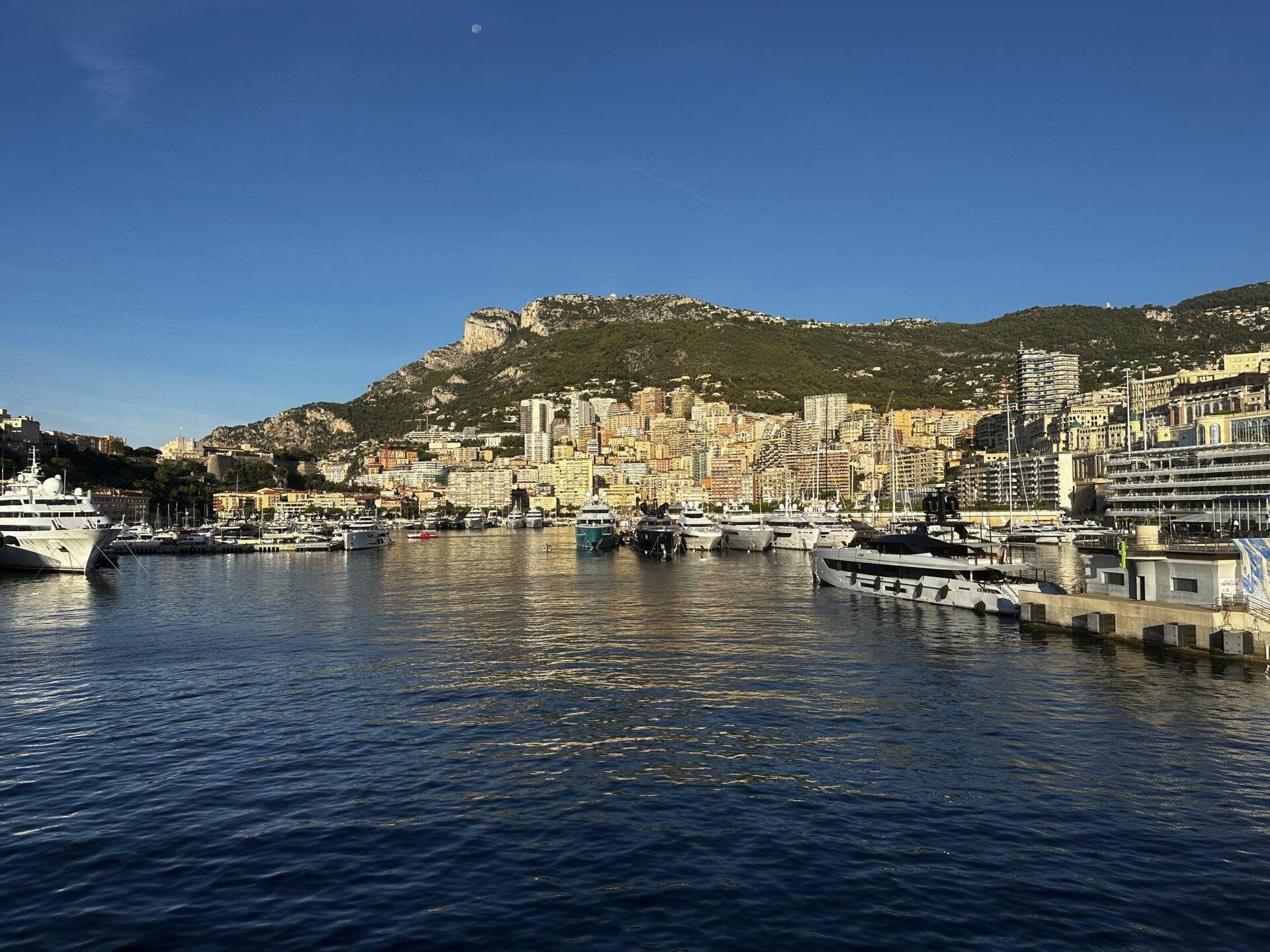We made our last port call of the cruise in Portofino, a small commune with Liguria. And when I say small, I’m not kidding — the population is about 400 people. As in the case of St. Tropez, this started out as a tiny protected fishing village and then started to become a popular destination with Northern European aristocrats and ultimately jet setters. If you want to know what it looks like and don’t have the time or money to get here, go to the Universal Orlando Resort, where there is a full scale replica! If you are a shopaholic, this is a good place to be. For us, it was a lot of window shopping. Instead we took a boat trip to Camogli, a small fishing village up the coast on the way to Genoa. In a good news/bad news scenario, the boat we were on developed engine trouble and we had to head to a town in the opposite direction named Santa Margherita Ligure, where we had to change boats. It was actually a pretty attractive town; I wish we could have spent some more time there. On our way back to Camogli, we saw some dolphins and it turns out that an earlier name for this area was Port of the Dolphin, given by Pliny the Elder. Yeah, you’ve heard of him!
Camogli was, and continues to be a fishing village. In the old days, the fishing fleet went out for weeks at a time, leaving their wives behind. It turns out that Camogli is short for Casa de Moglie, which translates to home for the wives! Surprisingly, Camogli used to be an important naval center in the Mediterranean (it had around 700 sailing ships) during the mid-19th century that represented about a third of all the Italian’s power in the Mediterranean. There is no evidence of that today and it’s hard to imagine where all those ships anchored! Anyway, we were there during the feast day for one of their two patron saints (San Prospero). One of the locals told us we should stay for the evening for the big party and fireworks. Unfortunately, we had places to be. Camogli is a fun village to walk around. There are lots of narrow alleyways and overlooks over the beach below. They also have a very impressive Basilica (Santa Maria Assunta) with lots of impressive frescoes from the 1500s. The locals must have muscular legs because the apartment buildings are up to seven stories tall with no elevators. As they will tell you, they are famous for their pesto, focaccia, and a local pastry called Camogliesi that is filled with cream. We tried the focaccia, but passed on the others to try the fried seafood right off the boat. Talk about fresh! Deb ended up getting a sculpture made out found beach plastic in an acrylic. He has shown his work all over the world. On the way back, we stopped briefly at an old Benedictine monastery called the Abbazia di San Fruttuoso, that can only be reached by water (or a treacherous hike over the mountain). It was ultimately turned over Italy’s National Trust and you can now spend the night there or just enjoy the beach for the day.
After we leave the ship, we are off to Paris!
This entry was posted in Cruising, Italy, Travel


